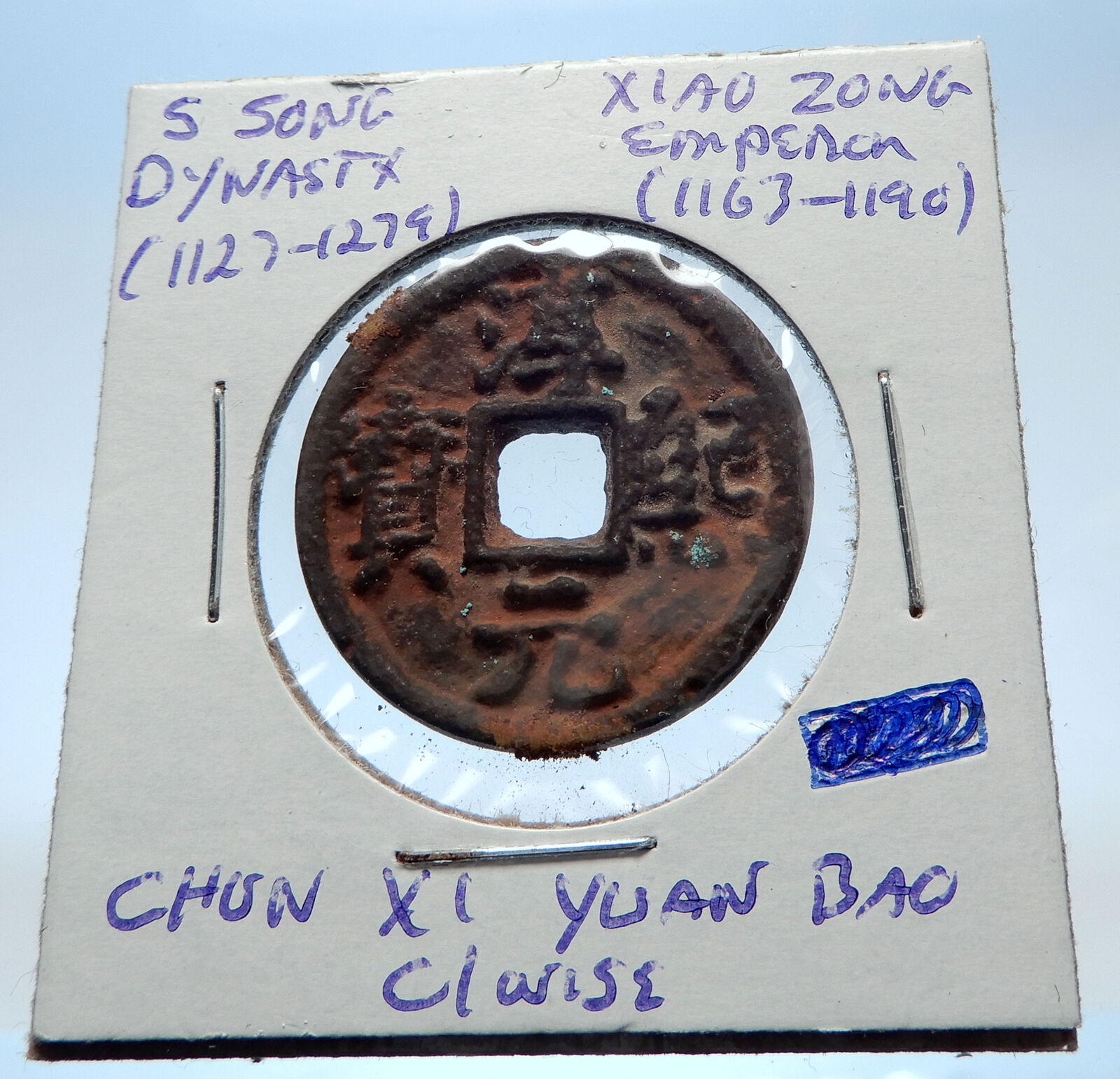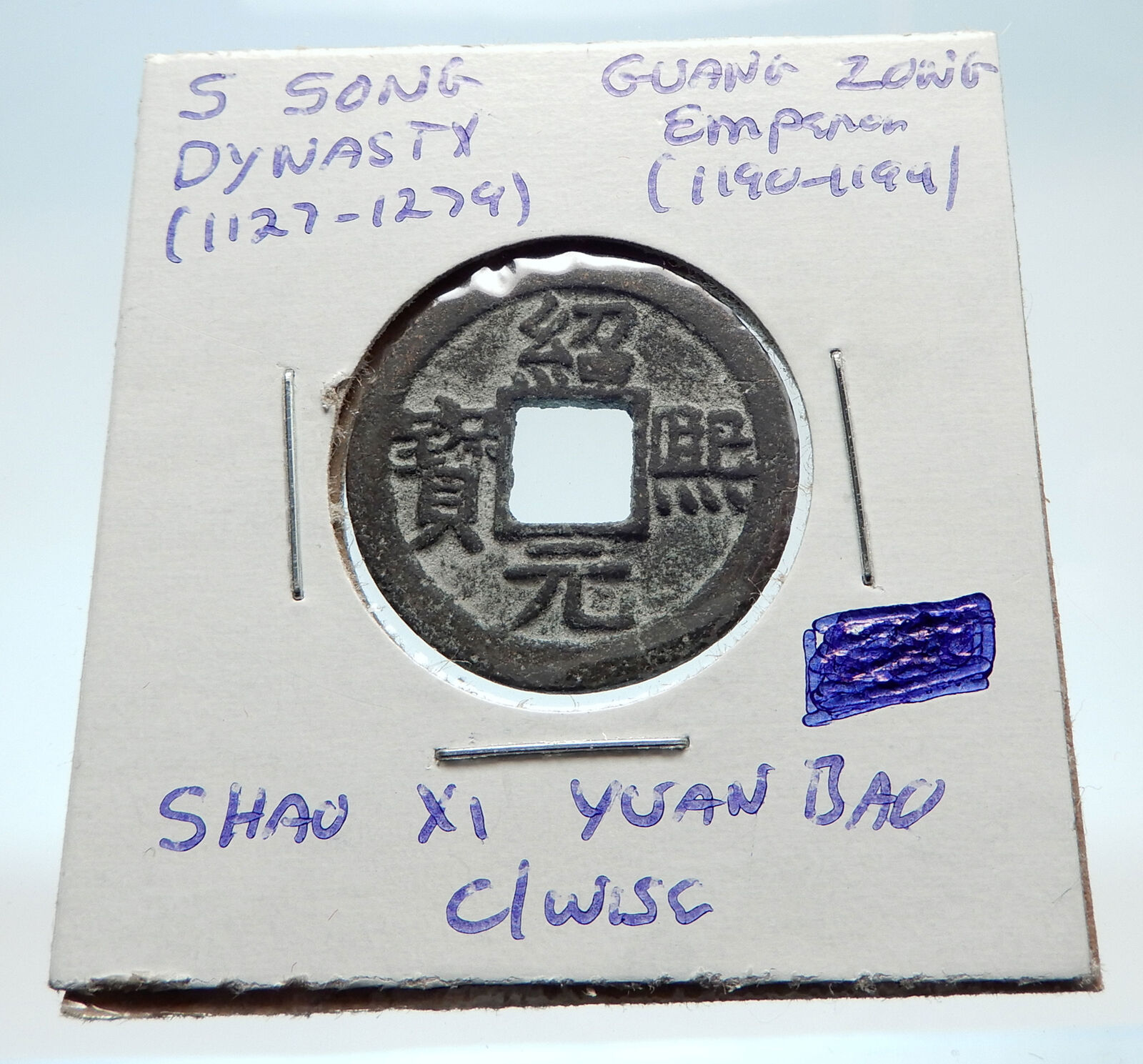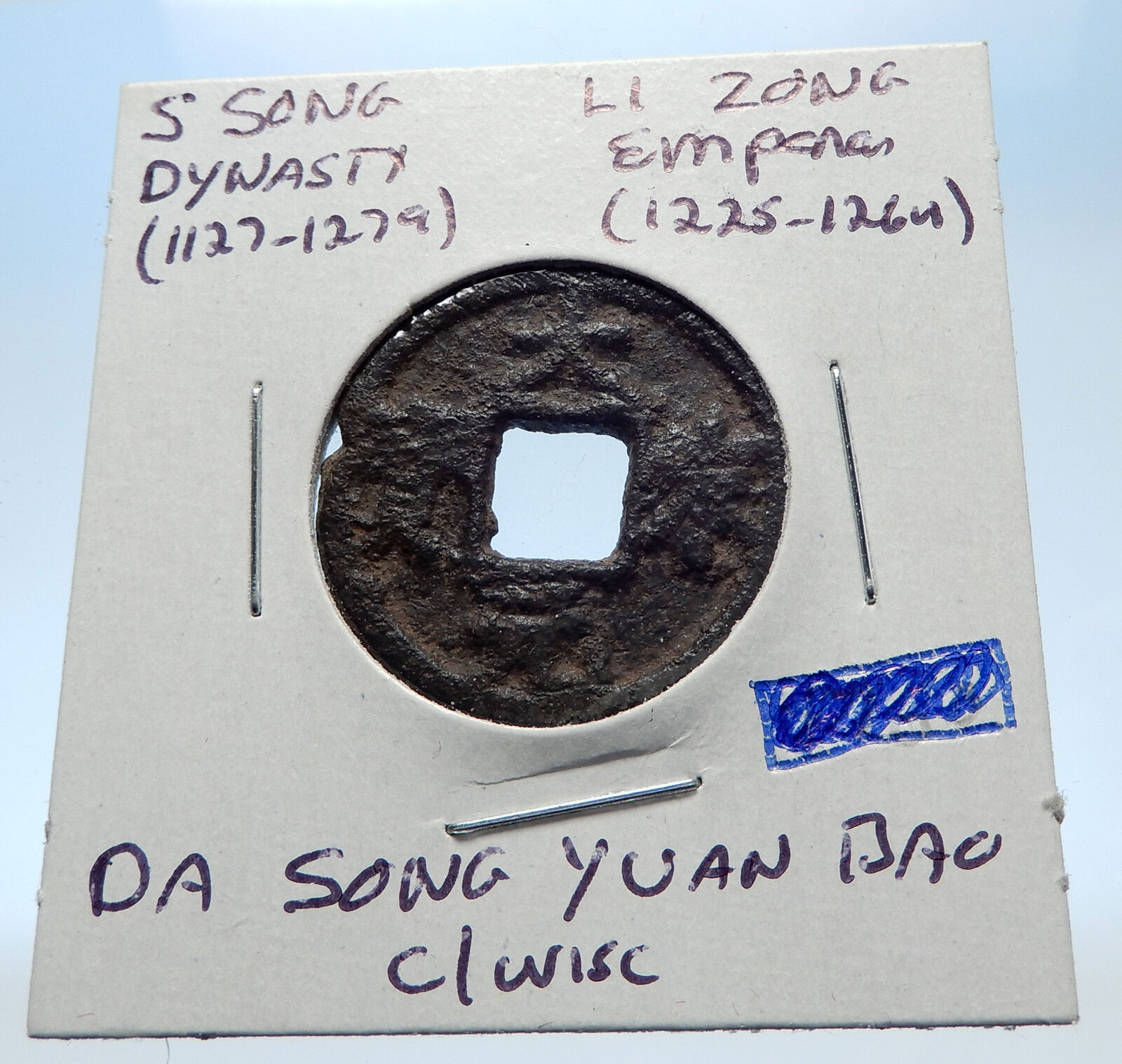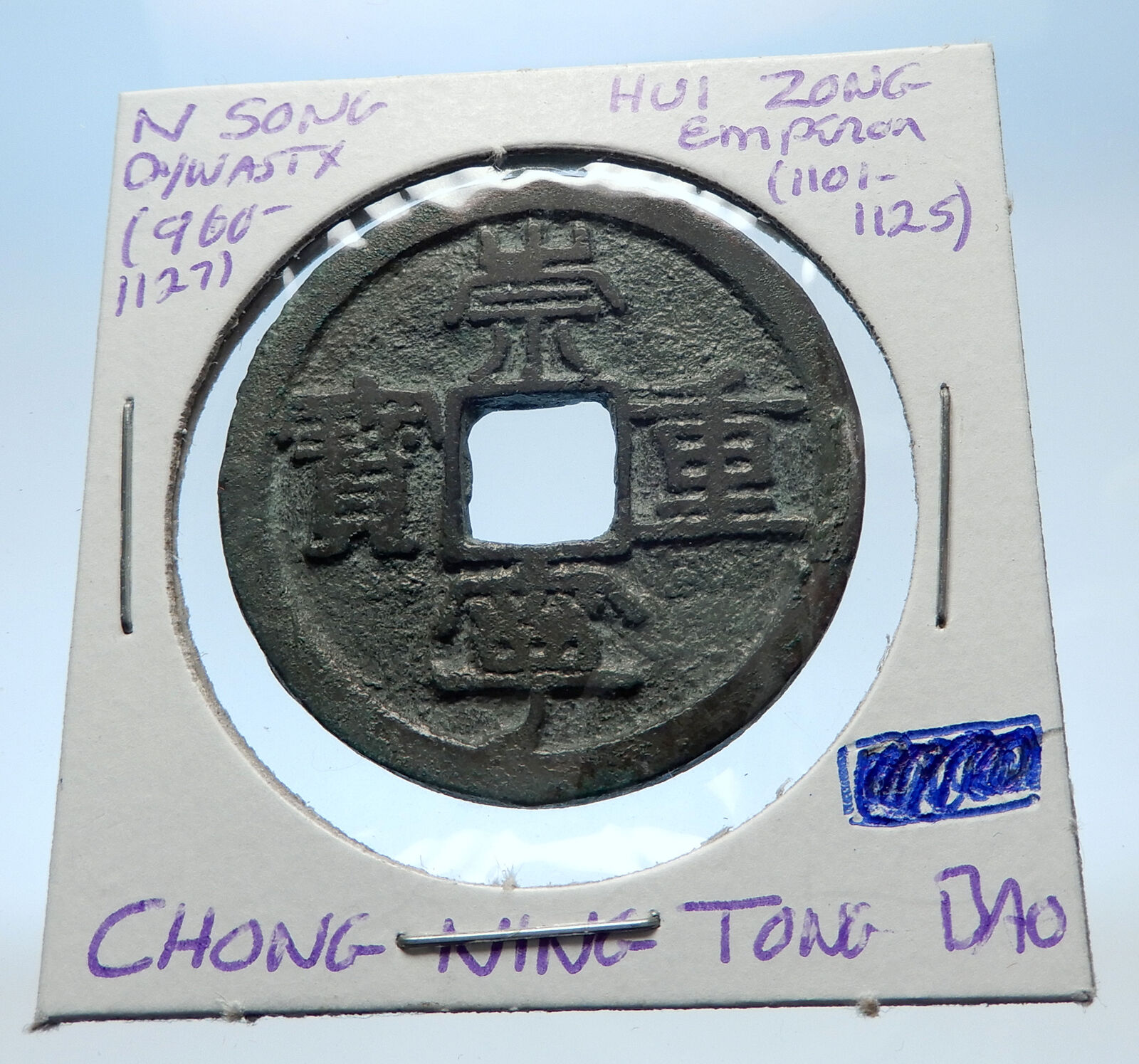|
China – Southern
Dynasty (420-479 AD)
Emperor Wen (420-479 AD)
Bronze Dang Liang Luu Zhu Cash Token 27mm, Struck
420-479 AD
Reference: H# 10.16
Chinese Symbols.
You are bidding on the exact item pictured, provided with a Certificate of Authenticity and Lifetime Guarantee of Authenticity.
Emperor Wen: After the death of
Emperor Wu, his son Emperor Shao ruled briefly
before being judged incompetent and killed by
government officials led by Xu Xianzhi,
replacing him with Emperor Wen, a different son,
who soon killed the officials who supported him.
Emperor Wen’s reign was a period of relative
political stability because of his frugality and
good government; the period was called the Reign
of Yuanjia (Chinese: 元嘉之治).
In 430, Emperor Wen started a number of
northern expeditions against Northern Wei. These
were ineffective because of insufficient
preparations and excessive micromanagement of
his generals, increasingly weakening the
dynasty. Because of his jealousy of Tan Daoji, a
noted leader of the Army of the Northern
Garrison, he deprived himself of a formidable
general to the great delight of the Northern Wei.
Thus, they were unable to capitalize when
Northern Wei suffered the Wuqi Incident.
Starting in 445, Northern Wei, taking advantage
of Liu Song’s weakness, made major incursions in
the lands between the Yangtze and the Huai
(modern Shandong, Hebei, and Henan) and
devastating six provinces. Emperor Wen lamented
that if Tan were still alive, he would have
prevented Northern Wei advances. From then on,
Liu Song was in a weakened state.
Emperor Wen was assassinated by Crown Prince
Shao and Second Prince Jun in 453 after planning
to punish them for witchcraft. However, they
were both defeated by Third Prince Jun, who
become Emperor Xiaowu. proved to be licentious
and cruel, supposedly committing incest with the
daughters of an uncle who had helped him gain
the throne; his rivals also claimed he had
incest with his mother. This led to two
rebellions by the imperial clan, one of which
saw him slaughter the inhabitants of Guangling.
Southern Dynasty: The Jin were
succeeded by a series of short-lived dynasties:
Liu Song (420–479), Southern Qi (479–502), Liang
(502–557) and Chen (557–589). Because all of
these dynasties had their capital at Jiankang
except Liang, they are sometimes grouped
together with Eastern Wu and Eastern Jin as the
Six Dynasties. The rulers of these short-lived
dynasties were generals who seized and then held
power for several decades but were unable to
securely pass power of rule onto their heirs to
continue their dynasty successfully. Emperor Wu
of Liang (502–549) was the most notable ruler of
his age, being a patron of the arts and of
Buddhism.
Cash was a type of coin of China and East Asia, used from the 4th century BC until the 20th century AD. Originally cast during the Warring States period, these coins continued to be used for the entirety of Imperial China as well as under Mongol, and Manchu rule. The last Chinese cash coins were cast in the first year of the Republic of China. Generally most cash coins were made from copper or bronze alloys, with iron, lead, and zinc coins occasionally used less often throughout Chinese history. Rare silver and gold cash coins were also produced. During most of their production, cash coins were cast but, during the late Qing dynasty, machine-struck cash coins began to be made. As the cash coins produced over Chinese history were similar, thousand year old cash coins produced during the Northern Song dynasty continued to circulate as valid currency well into the early twentieth century.
In the modern era, these coins are considered to be Chinese “good luck coins”; they are hung on strings and round the necks of children, or over the beds of sick people. They hold a place in various superstitions, as well as Traditional Chinese medicine, and Feng shui. Currencies based on the Chinese cash coins include the Japanese mon, Korean mun, Ryukyuan mon, and Vietnamese văn.
|










